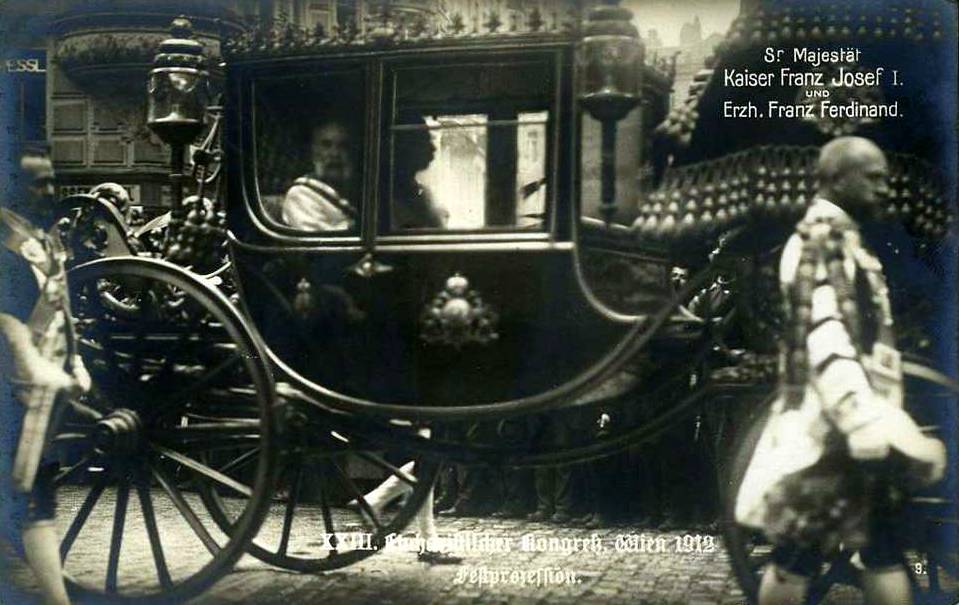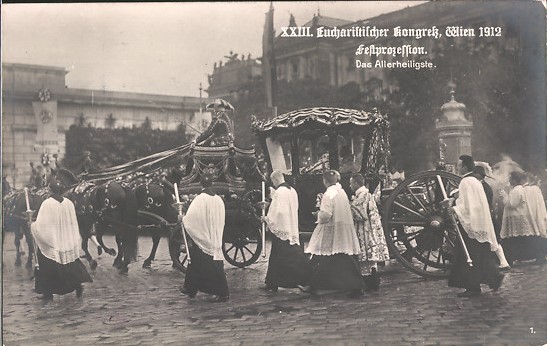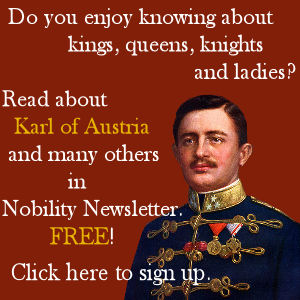 The Emperor’s example deeply touches the faithful: At 84 Franz Joseph’s devotion to the Blessed Sacrament is very much alive.
The Emperor’s example deeply touches the faithful: At 84 Franz Joseph’s devotion to the Blessed Sacrament is very much alive.
Vienna. Sunday, September 15, 1912. It had been agreed: The great Sunday procession would be canceled if the weather was inclement. Then, only Mass would be offered by the Papal Legate in the Cathedral of Saint Stephen, attended solely by the Emperor and his court.
Nonetheless, on Sunday morning, oblivious to the unceasing rainfall, the eighty thousand men originally assigned to the procession are faithfully at their posts with their standards, banners, and band. And too, we learn, the emperor has decreed that the procession must take place at any cost. “The city people,” he said, “have umbrellas; the peasants don’t fear the rain; and the Blessed Sacrament will go in a carriage.” The emperor himself, in spite of his 84 years, will participate in the procession as well.
At eight o’clock the troops stand ready. The first cortege, made up exclusively of men, begins to file out through the vestibule of the cathedral while one hundred and fifty thousand women and girls line the walks from the cathedral square to the monumental gates of the imperial palace. In the lead are the parishes of Vienna; then come the Hungarian magnates, The Tyroleans, numbering eight thousand, come next, followed by the Bosnians, Czechs, Moravians, Ruthenians, and Romanians. Then come the foreign delegations. The French are recognized by the tricolor banners firmly held high by three of thief countrymen despite the deluge; then come the Spaniards, Italians, English, Germans, and the others.
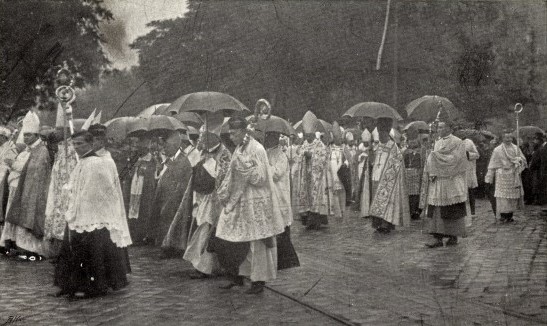 It is now eleven thirty. The clergy are about to enter the scene, with five thousand priests and religious hierarchically arranged: priests, monks representing every religious order, canons, and, last of all, two hundred bishops fully vested, with copes, miters, and crosiers. Cornets and trumpets announce the third cortege, that of the most Blessed Sacrament, closely followed by the emperor. First come scarlet-robed pages; following these are the white-plumed court militiamen mounted on stunning gray steeds; then come the dragoons and the hussars.
It is now eleven thirty. The clergy are about to enter the scene, with five thousand priests and religious hierarchically arranged: priests, monks representing every religious order, canons, and, last of all, two hundred bishops fully vested, with copes, miters, and crosiers. Cornets and trumpets announce the third cortege, that of the most Blessed Sacrament, closely followed by the emperor. First come scarlet-robed pages; following these are the white-plumed court militiamen mounted on stunning gray steeds; then come the dragoons and the hussars.
After yet another cavalry battalion, the cardinals arrive. Each prince of the Church has his own carriage and is accompanied by his chaplain, on foot, carrying his cross, crosier, ritual torch, and prayer book. His Eminence Cardinal Amette rides in a magnificent carriage of black and gold relief pulled by four horses. He has nothing to fear from the rain but is concerned about the people outside, admiring them who from early dawn have eagerly awaited this opportunity to honor the Blessed Sacrament.
Then trumpets sound and the tolling of many bells is heard. The coronation carriage of Maria Theresa enters the Heldenplatz drawn by eight black horses preceded by court officials, chamberlains, and the great marshal of the court. The Papal Legate can be seen easily by everyone as he kneels before an altar, inside the carriage, on which stands the great monstrance.
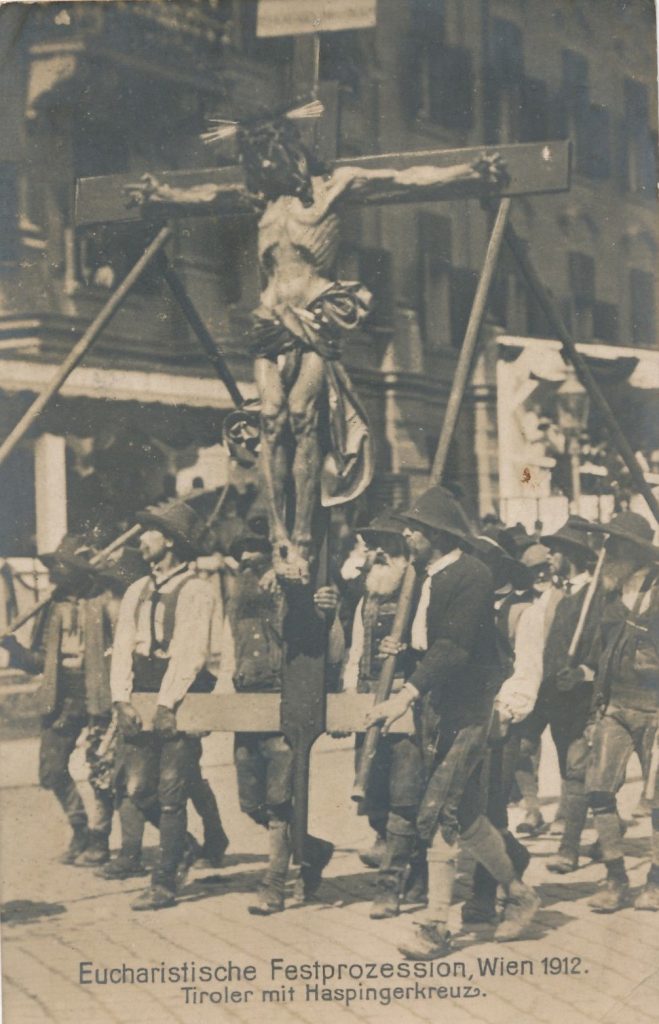 The rain stops momentarily and a few faint rays of sunlight peer through the clouds. All hats are removed. Many fall to their knees without a thought for the mud. In an enthralling silence, the God of the Most Holy Eucharist passes by. How Our Lord must bless these humble people bending their heads as He passes! How He must listen to the echoes of the heart-felt piety!
The rain stops momentarily and a few faint rays of sunlight peer through the clouds. All hats are removed. Many fall to their knees without a thought for the mud. In an enthralling silence, the God of the Most Holy Eucharist passes by. How Our Lord must bless these humble people bending their heads as He passes! How He must listen to the echoes of the heart-felt piety! The carriage of Our Lord having passed, we now see that of the emperor, drawn by eight white horses. Franz Joseph, dressed in a blue uniform, gazes fixedly at the Blessed Sacrament. At his side is the archduke, heir to the throne. A formidable and unanimous ovation from this immense multitude welcomes the emperor as he enters the Heldenplatz. One feels that the one hundred thousand Catholic present wish not only to honor their sovereign but also to thank him for this example of faith and show him that all hearts beat in unison at this supreme moment.
The carriage of Our Lord having passed, we now see that of the emperor, drawn by eight white horses. Franz Joseph, dressed in a blue uniform, gazes fixedly at the Blessed Sacrament. At his side is the archduke, heir to the throne. A formidable and unanimous ovation from this immense multitude welcomes the emperor as he enters the Heldenplatz. One feels that the one hundred thousand Catholic present wish not only to honor their sovereign but also to thank him for this example of faith and show him that all hearts beat in unison at this supreme moment.
The procession is brought to a close with a superb parade of the Austrian and Hungarian mounted guards and the carriages of the archdukes. The itinerary has been followed, but is impossible to celebrate Mass at the colonnade where the altar has been set up. It is not even possible to give the blessing from there, but an inspiration comes to the Papal Legate. He turns again in the direction of the waiting multitude and his carriage makes another full tour around the immense square. Easily seen through the carriage windows, the prelate repeatedly raises the monstrance and blesses the multitude. All are greatly consoled with this supreme benediction.
The bishops, the cardinals, and the Emperor, respectively preceding and following the Blessed Sacrament, enter the chapel of the Imperial Palace. The Cardinal-Legate celebrates the Holy Sacrifice of the Mass attended by the Emperor and his entire court. It is now one o’clock in the afternoon. The multitude disperses. All are joyful for having honored the Blessed Eucharist despite the adversity of the elements. One Austrian lady comments, “Our Lord wishes to show us that we must confront difficulties if we wish to follow Him.”
A great thought. The God of the Eucharist wishes to remain the hidden God, but, without a doubt, also wants to receive the homage of the great and the small.
From the weekly magazine, Le Noëll, Paris, Oct. 3, 1912, for children and adolescents. Printed in Tradition, Family and Property Magazine, September-October, 1994; pgs. 32-35. It was also covered in the NY Times.
Stories on Honor, Chivalry, and the World of Nobility—no. 643
